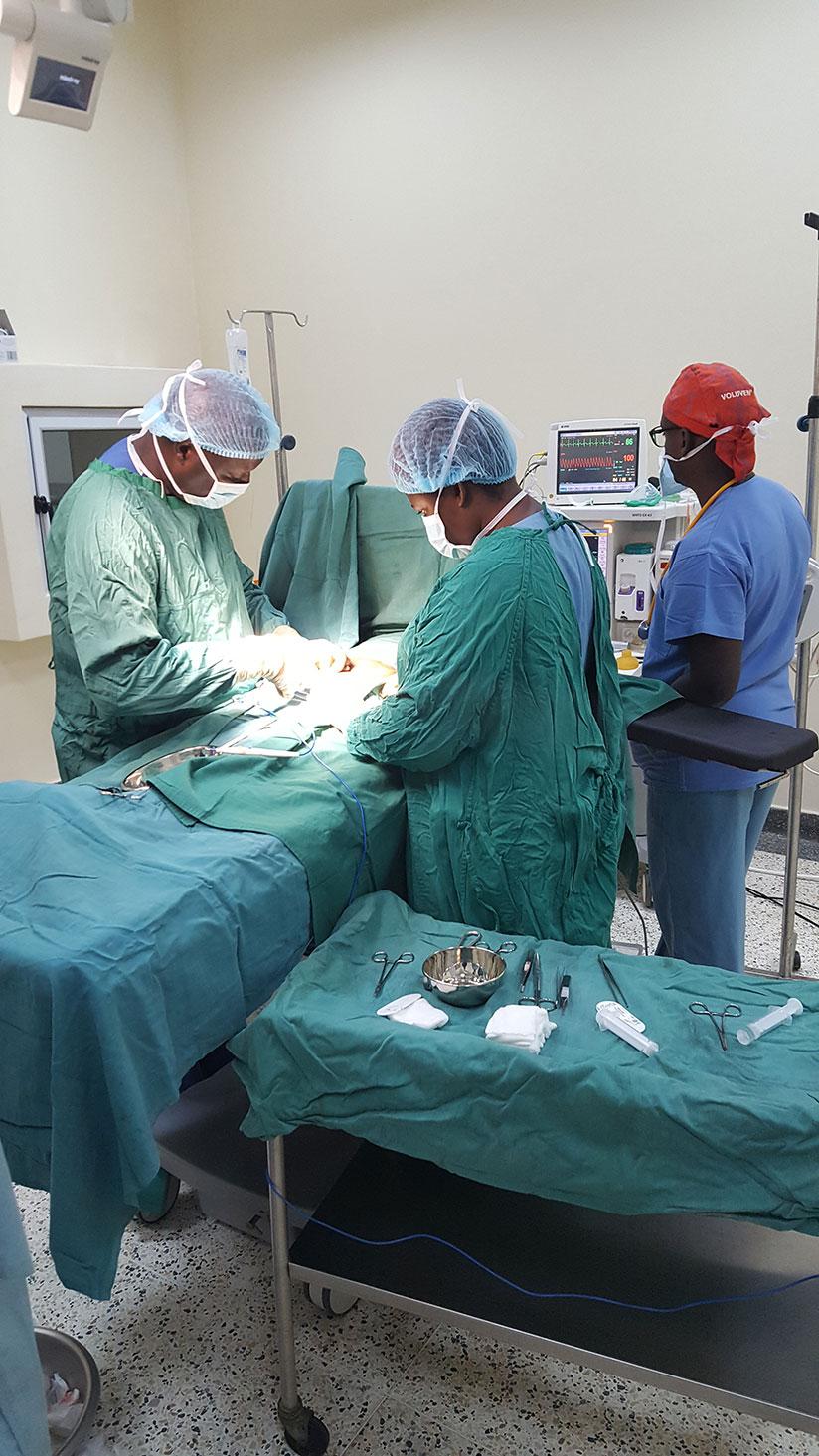Normally, the testicles develop in the abdomen of the baby before birth. Then they come down into the scrotum (the sac where testes are contained) by birth. An undescended testicle occurs when one or both testicles fail to drop down before birth.


Normally, the testicles develop in the abdomen of the baby before birth. Then they come down into the scrotum (the sac where testes are contained) by birth. An undescended testicle occurs when one or both testicles fail to drop down before birth.
This happens fairly commonly in premature infants and occurs about 3-4% of the time in full-term infants. About 65% of these usually drop before the age of nine months.
Sometimes a child’s testicle will drop into the scrotum, but then retract or pull back out of the scrotum. This is not considered an undescended testicle. This happens because of the strength of the muscles that retract the testicles before puberty. This is considered fairly normal and does not always require surgery.
Undescended testis can affect one or both testes, although commonly affects the left testis. In children with this condition, approximately 10 percent have both testes affected. The most common location for an undescended testicle is just outside the scrotum. The undescended testis can also be found at the belt level (known medically as the inguinal region) or even in the abdomen.
There is no one single known cause for undescended testicles, although it is linked to some hormonal imbalances of the fetus during pregnancy.
Testicles that do not drop by about one year of age should be examined by a surgeon and by two years of age, if the testicles have not dropped, surgery should be done to prevent permanent damage to the testicles.
Testicles that do not descend naturally into the scrotum are considered abnormal throughout the patient’s life. These undescended testicles have a higher likelihood of developing into testicular cancer later in life, regardless of whether they are surgically brought down or not although research shows that bringing down these testes into the scrotum earlier in lifemay reduce the chances of progression into testicular cancer. These undescended testes are also associated with increased risk of infertility (testicles need a favorable environment, found in the scrotum for them to make sperms normally), developing a hernia on the affected side of the testis, and testicular torsion (twisting of the testicle on its blood vessels causing sudden pain and loss of the twisted testicle).
Diagnosis of undescended testes is made by doing physical examination and feeling for presence of the testes in the scrotum or in the regions above the scrotum. An ultrasound scan can be done to show the exact location of the testis especially if the testis is located in the abdomen.
A surgeon who specializes in these male reproductive systems and urinary tract system is called a urologist. At Rwanda Military Hospital, the urologist clinic runs every Tuesday of the week, where such medical conditions are handled and scheduled for surgery accordingly.
The treatment for undescended testis can be hormonal (hormone injections to stimulate movement and help the testicle descend), surgical (undescended testis brought down and fixed into the scrotum), or a combination of the two.Surgery is the most common treatment and should be done early, rather than later, to prevent infertility.
Bringing the testicle down into the normal spot, the scrotum whether by hormonal treatment, surgery or both maximizes sperm production and increases the odds of good fertility. It also allows for early detection of testicular cancer as the testis can be more easily examined later in life when in the scrotum than when outside the scrotum, reduces the risk of developing testicular torsion.
It is therefore very important that mothers examine their babies regularly to feel for the presence of the testes in the scrotum, and seek medical attention if one or both testes can’t be felt in the scrotum.
Dr. Ian Shyaka is a General Practitioner at Rwanda Military Hospital


